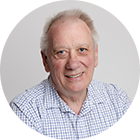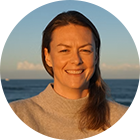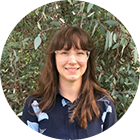On World Tsunami Awareness Day, 5 November, AIDR will be showcasing the recently revised Tsunami Emergency Planning in Australia Handbook (2025). The theme for this year's World Tsunami Awareness Day is 'Be tsunami ready: invest in preparedness'.
Australia is surrounded to the north and east by some 8,000 kilometres of active tectonic plate boundaries capable of generating tsunamis that would reach Australia within 2-4 hours. Other plate boundaries across the Pacific basin, such as the South American subduction zone, can also generate tsunamis that would reach Australia in 14-18 hours. Understanding tsunami risk in Australia helps emergency managers and at-risk communities to prepare more effectively for a tsunami.
In this webinar attendees will hear from 4 experts involved in the writing and review of the handbook. They will discuss the updates to this edition of the handbook, the role of tsunami science in coastal management, how emergency management has evolved since the 2004 Indian Ocean Tsunami, and present a case study on the WA Tsunami Inundation Modelling Project - informing evacuation maps in WA.
Guest Speakers:
 David Parsons ESM
David Parsons ESM
Director, Crisis Management Australia
President, Australian Institute of Emergency Services
David is a Lecturer at the Australian Graduate School of Policing and Security Studies at Charles Sturt University, the Deputy Director Training with Response and Recovery Aotearoa New Zealand and an educator with the Australian Centre for Investigation and Incident Management Solutions.
David is the President and Fellow of the Australasian Institute of Emergency Services, an Honorary Fellow of the Business Continuity Institute, a Fellow of the Emergency Management Academy New York, a Life Member of the NSW State Emergency Service and a member of the International Association of Emergency Managers.
 Associate Professor Hannah Power
Associate Professor Hannah Power
Associate Professor in Coastal and Marine Science, University of Newcastle
Hannah Power is an Associate Professor of Coastal and Marine Science at the University of Newcastle, Australia, and a Science and Technology Australia 2021-22 Superstar of STEM. As a coastal morphologist and geologist, Hannah has worked on coastlines in Australia and around the world. Her research investigates the beaches, estuaries, rivers, and reefs and examines how processes such as waves, tides, and currents change the shape of our coast over time.
Hannah also works on improving predictions of extreme events and hazards such as tsunami. Hannah is a passionate science communicator and is regularly featured in media in Australia and overseas.
 Dr Jane Sexton
Dr Jane Sexton
Director, State Intelligence, Predictions and Planning, Queensland Fire Department
Jane began her career as an applied mathematician in a research position at the University of Sydney, followed by roles at the Defence Science Technology Group, Geoscience Australia, and the Office of Industry Innovation and Science Australia, where she led teams and advocated for science to inform policy and decision-making. Most recently, as Director in the State Operations Directorate at the Queensland Fire Department, Jane now leads a branch that applies intelligence, predictions, and planning to reduce disaster risk and enhance community safety.
 Adrian Brannigan
Adrian Brannigan
Intelligence Analyst, Department of Fire and Emergency Services, WA
Adrian has ten years of emergency management experience and is the project lead for the Western Australia Tsunami Inundation Modelling Project.
He has also undertaken research and operational intelligence for other hazards, including earthquakes, storm surge, cyclones, storms, floods, and bushfires.
Adrian worked as an engineering geologist investigating geo-hazards for 10 years before joining the Department of Fire and Emergency Services, WA.
He has over 20 years of experience collecting, analysing, processing, storing and disseminating information about hazards, exposures, vulnerabilities and impacts.
Adrian has completed a Master of Science in Earth Science with First Class Honours, and his thesis examined hazards, exposures, vulnerabilities and impacts in the coastal environment at New Zealand’s largest export port.
 Dr Isabel Cornes (Moderator)
Dr Isabel Cornes (Moderator)
Senior Project Officer, Knowledge Development, Australian Institute for Disaster Resilience
Isabel is a Senior Project Officer in the Knowledge Development team at the Australian Institute for Disaster Resilience. She completed her PhD at the University of Melbourne, which examined the ways that emergency management volunteers in Victoria ‘do’ community engagement to support household preparedness for natural hazards. Over the last three years Isabel has been involved in the development and review of Handbooks, Quick Guides and companion resources that make up the Australian Disaster Resilience Handbook Collection. Isabel recently managed the review of the Tsunami Emergency Planning in Australia Handbook.


